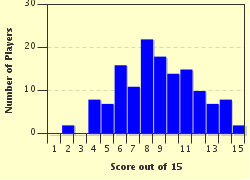Quiz Answer Key and Fun Facts
1. Gene Pitney's 'The Boss's Daughter' (1966) and Roy Orbison's 'Working for the Man' (1962) were pop hits with similar plots (or subplots). What was the main difference in their respective storylines?
2. Prolific 60s vocal group the Four Seasons' song titles were sometimes simply girls' names. Which of these was one?
3. What was the adjective used to describe German WW1 flying ace Baron Von Richtofen in the 1967 novelty pop song 'Snoopy vs the Red Baron', by 'one-hit wonders' the Royal Guardsmen?
4. In Simon and Garfunkel's 1966 song 'The Dangling Conversation', she reads her Emily Dickinson. What does he read?
5. Where did the Rolling Stones' 'Ruby Tuesday' come from, according to their '66 hit?
6. Where did the Beach Boys' Brian Wilson promise to take his 'Surfer Girl' in his 'woodie'?
7. If they were singing truthfully, what could you typically find New York-based 60s hitmakers the Young Rascals doing on a Sunday afternoon?
8. In Dion's '62 delinquent youth anthem 'The Wanderer', Flo is on his left arm, Mary's on his right, but where's Rosie?
9. The Beatles: Lucy's sky was full of diamonds, but what color was it?
10. In Donovan's '66 hit 'Sunshine Superman', to which other super-hero does the singer compare himself favorably?
11. Despite all the musical changes, popular vocalists from an earlier generation were still charting well in the 60s. Of the following major artists, which one did NOT score any number one hits anywhere in that decade?
12. In Bob Dylan's 1965 pop hit 'Like a Rolling Stone', the object of Bob's derision 'went to the finest school', but what did she used to spend most of her time doing there?
13. 'It's Now or Never' was the title of Elvis Presley's smooth 1960 reworking of a 19th century Italian song. What was the Italian title?
14. In 1963, 'Sukiyaki', a pretty ballad sung entirely in Japanese by Kyu Sakamoto, astonishingly hit US number one. But it was nothing to do with sukiyaki, a popular hotpot dish. Why was it called that?
15. Girl groups: Propelled by the fiery voice of Brenda Reid, this exciting trio's best-known hits were 'Tell Him' and 'He's Got the Power', both in '63. Who were they?
Source: Author
lifeliver
This quiz was reviewed by FunTrivia editor
agony before going online.
Any errors found in FunTrivia content are routinely corrected through our feedback system.


